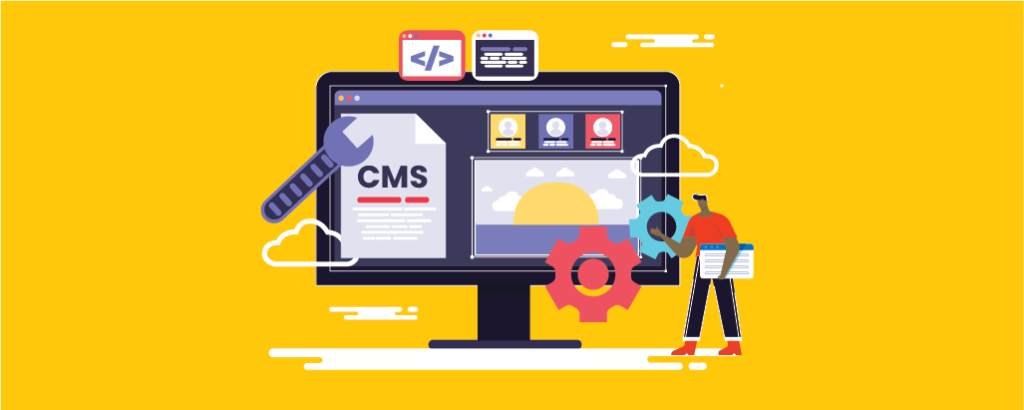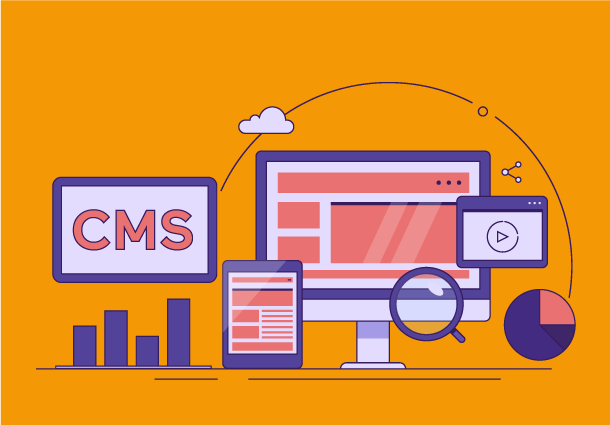Disentangling Content Fabrication and Presentation: Unveiling a Distinctive Approach
The emergence of the “Headless CMS” represents a significant departure from conventional content management systems (CMS), unlike the traditional models that tightly couple content creation, storage, and presentation, the headless CMS takes a different approach. This innovative paradigm involves separating the backend content creation and management from the frontend presentation layer. This separation is facilitated by APIs (Application Programming Interfaces), enabling content to be stored and managed independently of how it’s presented. 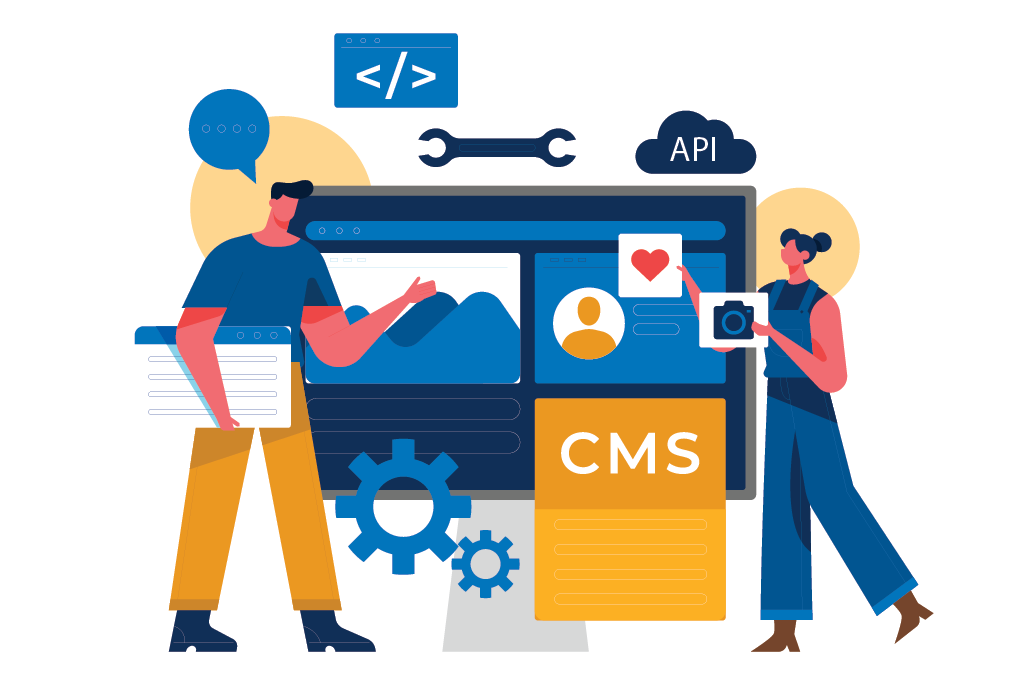 This means content creators can focus on crafting high-quality material without concern for its eventual layout, while developers can concentrate on building unique and tailored user experiences for various platforms using their preferred tools and technologies.
This means content creators can focus on crafting high-quality material without concern for its eventual layout, while developers can concentrate on building unique and tailored user experiences for various platforms using their preferred tools and technologies.
At the core of the headless CMS’s appeal is its ability to seamlessly deliver content across a multitude of channels and devices. Regardless of whether the content needs to be displayed on a website, mobile app, IoT device, or any other platform, the headless CMS ensures that the content can be easily distributed and adapted to suit the requirements of each channel. This eliminates the challenges associated with content duplication and simplifies the management process. Before getting into this, it is very important to know what is a headless cms? With the headless CMS, organizations can maintain consistency in their content while optimizing its presentation for different touchpoints. This adaptability is crucial in a world where user interactions span across various platforms, offering organizations a solution that remains adaptable, scalable, and prepared for the future. The headless CMS isn’t just a passing trend; it’s a strategic approach that positions flexibility, scalability, and enhanced user experiences at the forefront of modern content management strategies.
Cognizancing Headless CMS: Breaking Down the Basics
Traditionally, CMS platforms have operated as monolithic systems, tightly coupling the content creation, management, and presentation layers. This approach, while functional, can be limiting in the rapidly evolving digital landscape, where multi-channel experiences are paramount. 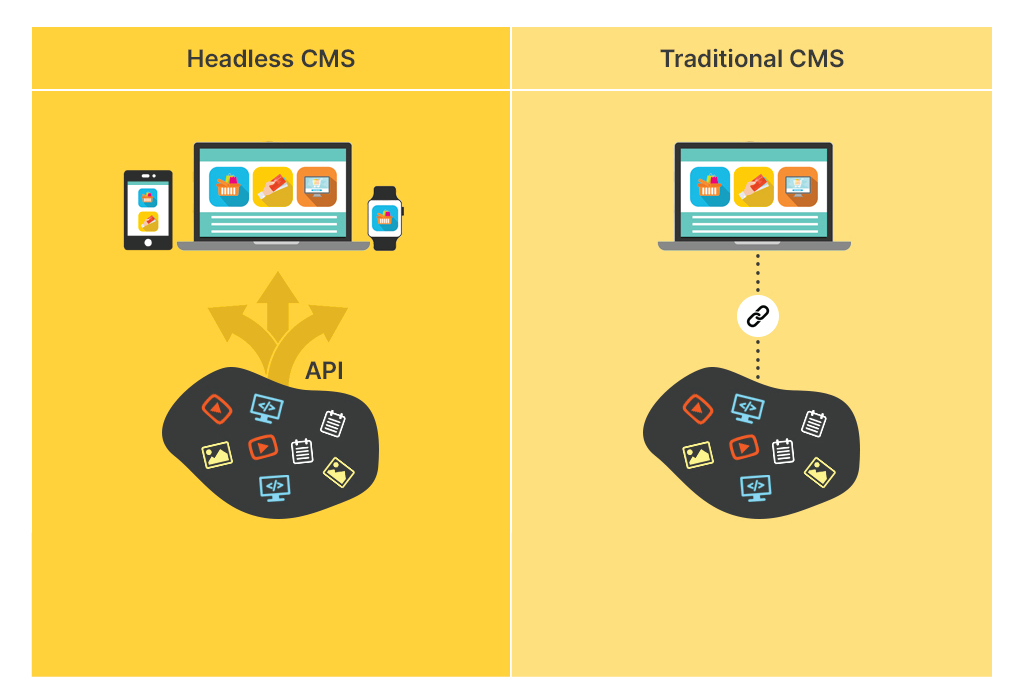 Enter the headless CMS, a game-changer that decouples the content management backend (the “head”) from the frontend presentation layer (the “body”).
Enter the headless CMS, a game-changer that decouples the content management backend (the “head”) from the frontend presentation layer (the “body”).
In a headless architecture, content creators interact with a backend system that serves as a repository for all content types – text, images, videos, and more. This content is then delivered to various front-end applications through APIs (Application Programming Interfaces). The key distinction lies in how they handle content and presentation when comparing Headless CMS vs. traditional CMS. Headless CMS decouples these aspects, allowing flexible delivery and omnichannel experiences. In contrast, traditional CMS integrates content and presentation, which can limit customization and agility. This decoupling enables content to be repurposed across multiple platforms, including websites, mobile apps, IoT devices, and even emerging technologies yet to be conceived.
Unearthing the Core Dynamics of Headless CMS Functionality
At the nucleus of a headless CMS’s mechanics lies the potent concept of disentangling content creation and presentation. A robust content repository forms the bedrock, where every conceivable form of content finds its abode, accompanied by its corresponding metadata. This repository serves as a reservoir from which content can be organized, swiftly searched, and effortlessly retrieved, streamlining the content management process. Central to this paradigm is the pivotal role played by APIs. These dynamic interfaces orchestrate the harmonious delivery of content to designated frontend applications. 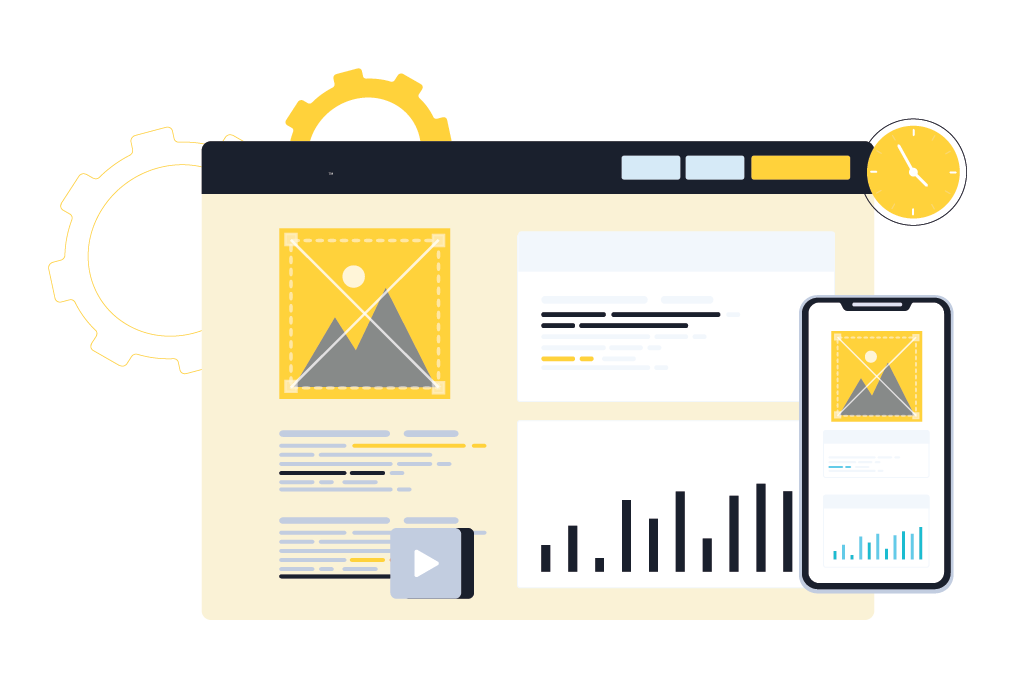 Through a meticulous interplay of APIs, content is retrieved from the repository and efficiently dispatched to its intended destinations. The separation between content management and delivery introduces a realm of unparalleled flexibility, allowing for dynamic adaptability to diverse presentation contexts.
Through a meticulous interplay of APIs, content is retrieved from the repository and efficiently dispatched to its intended destinations. The separation between content management and delivery introduces a realm of unparalleled flexibility, allowing for dynamic adaptability to diverse presentation contexts.
The evolution of frontend development takes center stage within the realm of the headless CMS. Frontend developers revel in the liberty to cherry-pick their preferred programming languages, frameworks, and tools. This creative autonomy empowers them to craft seamless, tailor-made user experiences that transcend the confines of traditional CMS limitations. As the narrative unfolds, the concept of multi-channel delivery emerges as a cornerstone. Content, meticulously structured within the repository and deftly disseminated through APIs, orchestrates its journey across an array of devices and platforms. This choreography ensures that the same piece of content unfolds harmoniously across this diverse landscape, maintaining its essence while eradicating redundancy. What Headless e-commerce platforms do is, decouple front-end and back-end, enabling flexible user experiences and streamlined operations for online businesses.
Benefits Galore: Why Headless CMS Is Gaining Traction
The numerous advantages of headless CMS that meet the changing demands of contemporary web development are largely responsible for its soaring popularity. Headless CMS enables businesses to publish content across several platforms and devices with unrivaled flexibility and speed by dissociating the content management layer from the display layer. This architecture encourages omnichannel experiences, enables seamless content upgrades, and streamlines cooperation between various teams working on various project-related tasks. Additionally, the headless method gives programmers the freedom to select the best technology for different elements, ensuring outstanding performance and future scalability. The popularity of what is a headless content management system demonstrates how it may revolutionize content management in an online ecosystem that is becoming more multi-channel and fast-paced as digital sceneries continue to change.
Amplified Flexibility: Unleashing Possibilities- Headless CMS grants developers the creative freedom to design unique user experiences without compromising on content integrity. The separation of concerns between the front-end and back-end ensures that changes on one end do not disrupt the other. Within this paradigm, developers are bestowed with the freedom to unfurl their imaginative prowess. They can design interfaces that resonate uniquely with the target audience, fostering engagement and interactivity. The shackles of conventional restrictions are unshackled, enabling the incorporation of cutting-edge design elements, user-friendly features, and novel interaction patterns that elevate user experiences to new heights.
Forward-Looking Framework: Preparing for Tomorrow- A headless CMS easily adapts as new gadgets and technologies appear. Repurposing content and delivering it to new platforms can reduce the need for redevelopment and save time and money. The content that is included within the Headless CMS functions as a dynamic reservoir in this fluid technological environment. Without the need for intensive redevelopment work, it may be easily extracted, reorganized, and seamlessly distributed to new and unfamiliar platforms. A Headless CMS is ready to accept and support these cutting-edge channels of engagement, whether it be the most recent wearable technology, a futuristic virtual reality interface, or a product that hasn’t even hit the market yet.
Enhanced Cooperation: Fostering Productive Teamwork– Collaboration is required for both content development and administration. While developers enhance the content’s appearance across numerous platforms, content creators may concentrate only on creating high-quality content. Now that they are equipped with their knowledge and creativity, content creators may focus all of their energy on producing high-quality content. They may focus fully on developing tales, forming themes, and honing material that resonates with the audience without being constrained by worries about the presentation or the nuances of various platforms.
Versatility and Efficiency: Navigating Growth- The modular nature of a headless CMS allows for scalability. When a sudden surge in traffic occurs, the backend content management is unaffected, ensuring consistent performance. When a sudden surge in website or application traffic transpires, the front end – the realm where user interactions occur – is typically the first to bear the brunt. In contrast, the backend content management system remains shielded from these traffic spikes, maintaining its stability and integrity. The modularity of a Headless CMS plays a pivotal role in this equilibrium.
Search Visibility and Performance Enhancement- Developers can fine-tune the performance of each frontend application, enhancing factors like page load speed and mobile responsiveness. This, in turn, positively impacts SEO rankings and user satisfaction. Page load speed, a crucial element in the digital landscape, becomes a canvas for developers to paint their mastery. By optimizing the structure of frontend applications, streamlining asset delivery, and adopting strategies like lazy loading, developers can orchestrate a symphony of rapid loading times. This not only gratifies users seeking instant gratification but also aligns with search engine algorithms that favor websites with swift load speeds, ultimately enhancing SEO rankings.
Befriending Microservices: A Seamless Integration Paradigm- Headless CMS fits seamlessly into microservices architectures, allowing organizations to build complex, modular systems that can be independently developed and deployed. At the crux of this synergy lies the inherent flexibility of a Headless CMS. Its architectural design, which decouples content creation and presentation, aligns harmoniously with the core tenets of microservices. In a microservices architecture, complex applications are built as a collection of smaller, independent services, each encapsulating specific functionalities. These services can be developed, deployed, and scaled independently, resulting in a modular and resilient ecosystem.
Closing Thoughts: The Future of Content Management
The rise of the headless CMS heralds a new era in content management, where flexibility, adaptability, and unparalleled user experiences take center stage. By decoupling the content creation backend from the frontend presentation layer, organizations can unleash their creativity, respond rapidly to technological shifts, and seamlessly deliver content to a diverse array of platforms. Whether you’re an e-commerce giant, a media conglomerate, or an innovative startup, embracing the headless CMS approach could be the game-changing step that propels your digital presence into the future.
Our seasoned professionals understand the intricacies of headless CMS implementation, assisting you in unlocking its full potential. By handholding you through the transition, we ensure that your creative vision aligns seamlessly with the technical landscape. Our tailored solutions are designed to accommodate your unique industry needs, unleashing innovation while maintaining content integrity as a Headless CMS development company. From conception to execution, our team ensures a holistic integration of the headless CMS, enabling you to navigate the digital landscape with agility and prowess. As industries navigate the currents of change, we stand as your steadfast partner, ensuring your digital presence propels into the future with unwavering resilience. In embracing the headless cms for enterprises revolution, let Pattem Digital be your trusted companion, propelling your organization towards an era where content management transcends boundaries, unleashes creativity, and crafts unparalleled digital narratives.
